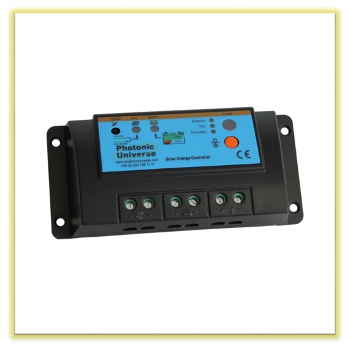SOLAR CONTROLLER
A solar charge controller(for example: RENOGY 20 AMP MPPT SOLAR CHARGE CONTROLLER ) is an essential part of every solar charging kit. The main role of a controller is to protect and automate the charging of the battery. It does this in several ways:
1. REDUCING THE VOLTAGE OF YOUR SOLAR PANEL
- Without a controller between a solar panel and a battery, the panel would overcharge the battery by generating too much voltage for the battery to process, seriously damaging the battery.
- Overcharging a battery could result in the battery exploding!
2. MONITORING THE VOLTAGE OF YOUR BATTERY
- The controller detects when the battery’s voltage is too low. When the battery drops below a certain level of voltage, the controller disconnects the load from the battery in order to prevent the battery from being drained.
- A completely drained battery will lose some of its overall capacity.
- Low voltage can still damage the battery if the load is connected.
3. STOPPING REVERSE CURRENT AT NIGHT
- The controller stops any current from flowing back into the solar panel at night.
- This prevents any damage to your solar charging kit.
A brilliant little device that boasts compatibility, simplicity, and a utilitarian understanding of solar panels, batteries, and loads: it is included in most of our small and medium sized kits.

As it uses PWM technology, the amount of current and voltage that is lost between the panel and the battery is reduced to next to nothing. It can prolong battery life and also protect it from overcharging, undercharging, short circuiting, and overheating.
This charge controller does not have to be used solely on one panel and one battery; a 10A PWM controller cab be used to regulate the charge of an array of solar panels connected in parallel with a total power of 160W. If you were to get a 20A PWM controller, you would be able to regulate a solar panel bank of up to 320W for 12V batteries, and 640W for 24V batteries.The PWM controller can also be used to connect solar panels to a battery bank of 12V batteries, provided that the batteries are the same size and that they are in good condition. The 10A controller is also conveniently compact, at only 14 x 7 cm.
Controllers with LCD displays
The programmable features allow the user to customise the charging process by setting the battery type and the capacity, choosing charging voltages at each stage, setting protection parameters, and by switching the load on and off by timer.
These controllers put the power in the owner’s hands, and makes a solar circuit much more advanced and controllable. An LCD display gives you information about many things, including:
-the solar panel current/voltage,the battery current/voltage
-the state of charge of the battery
-the temperature
-current charging stage


Comments
Post a Comment